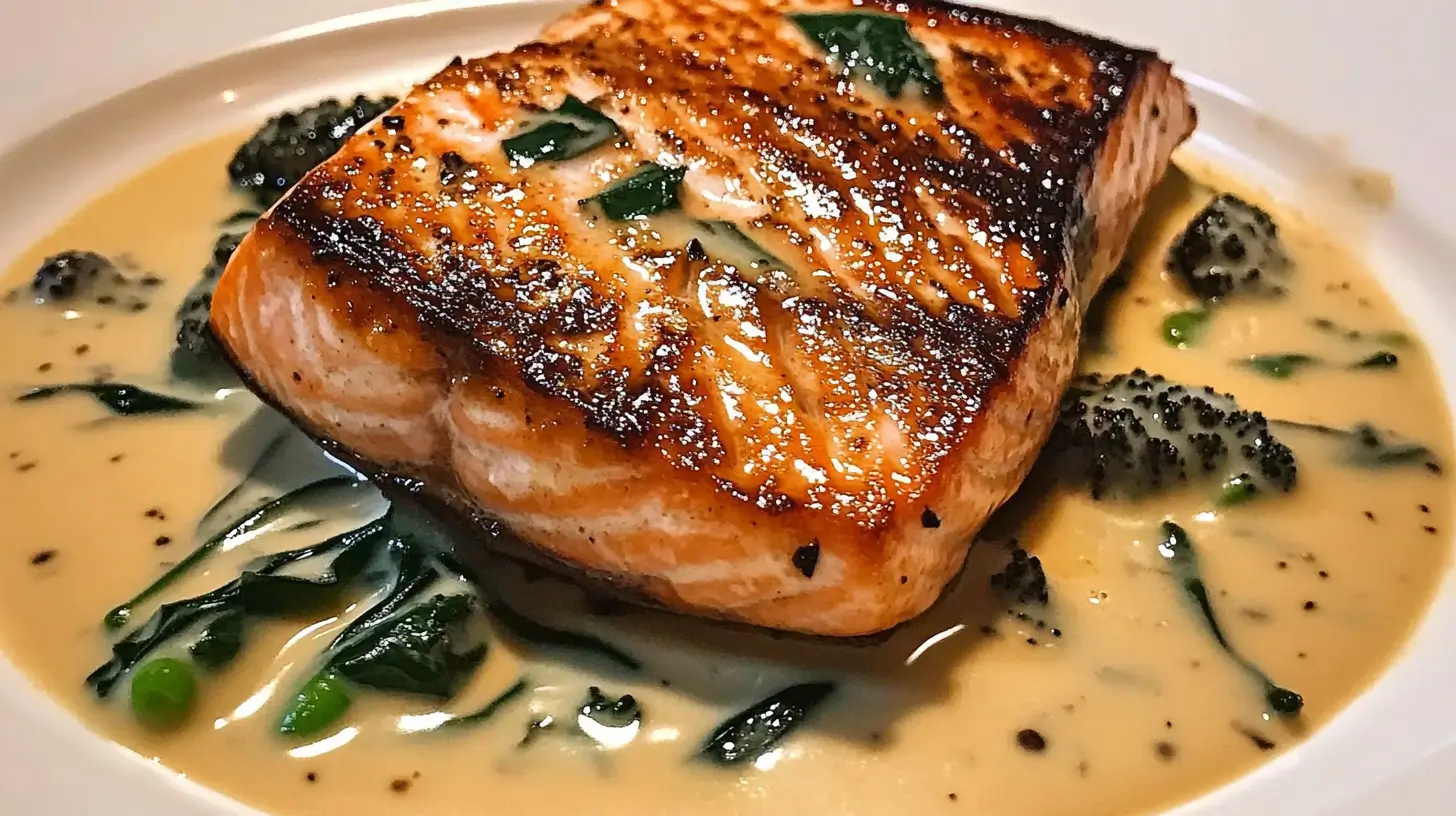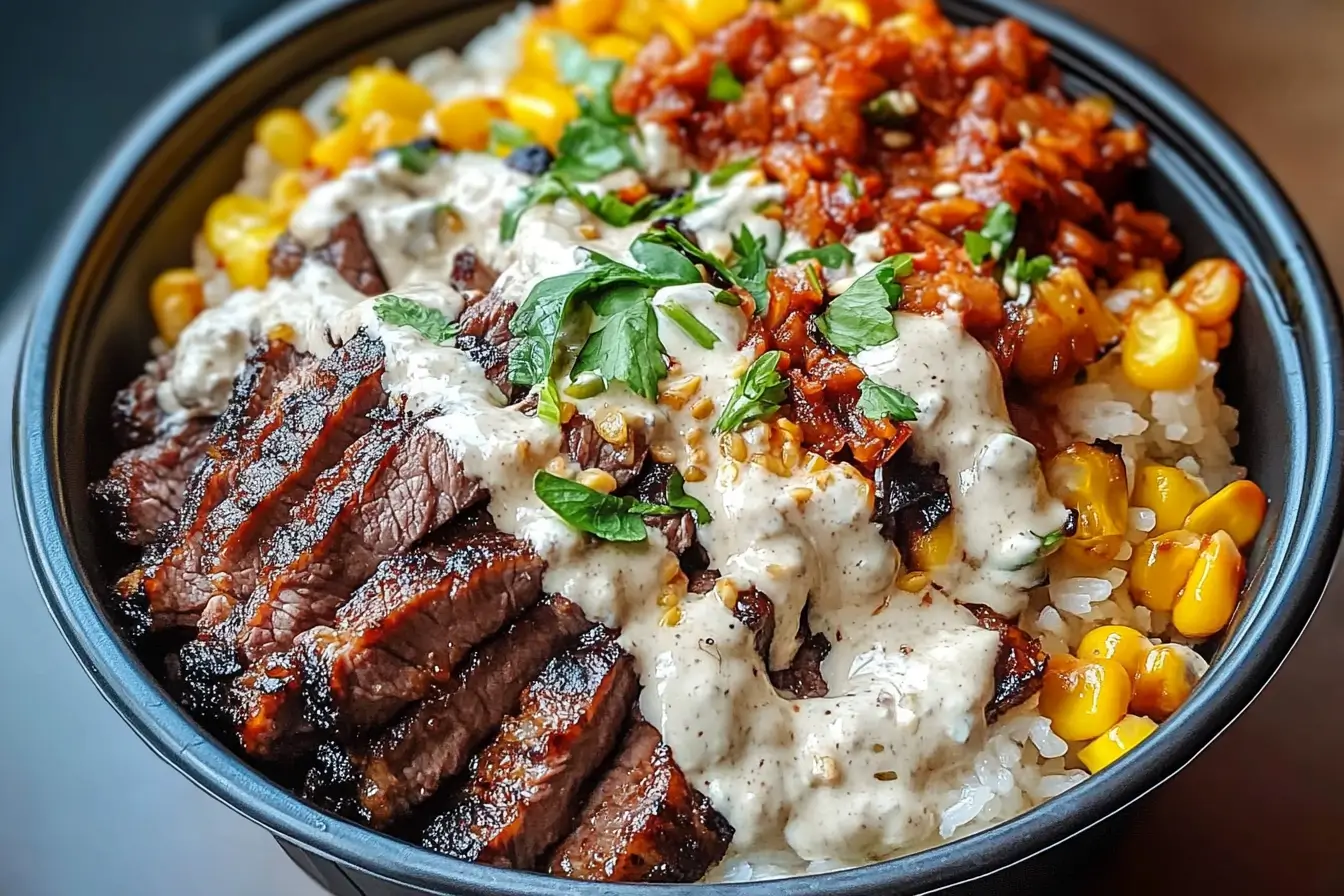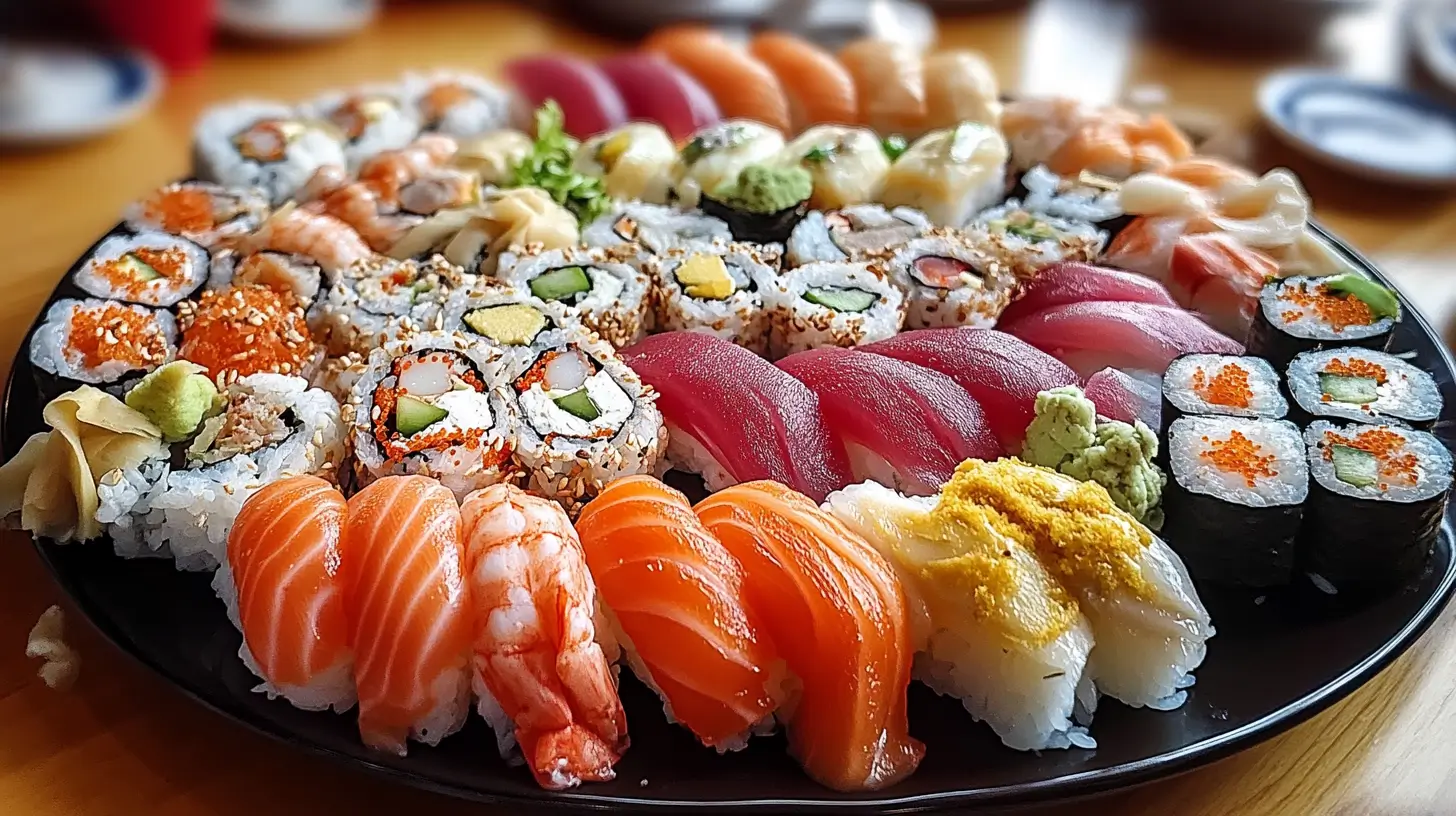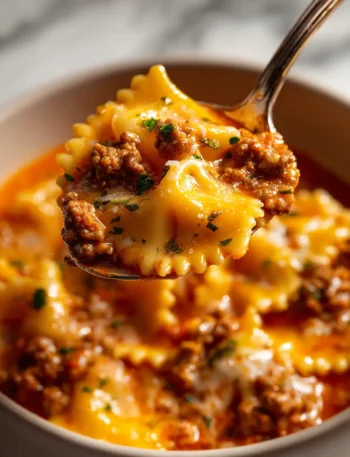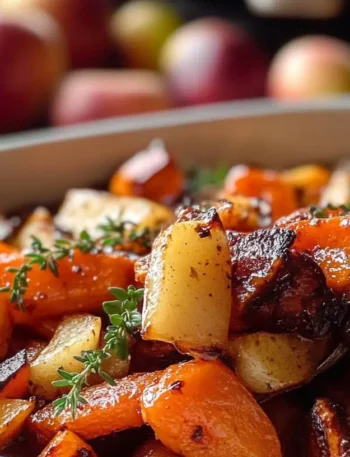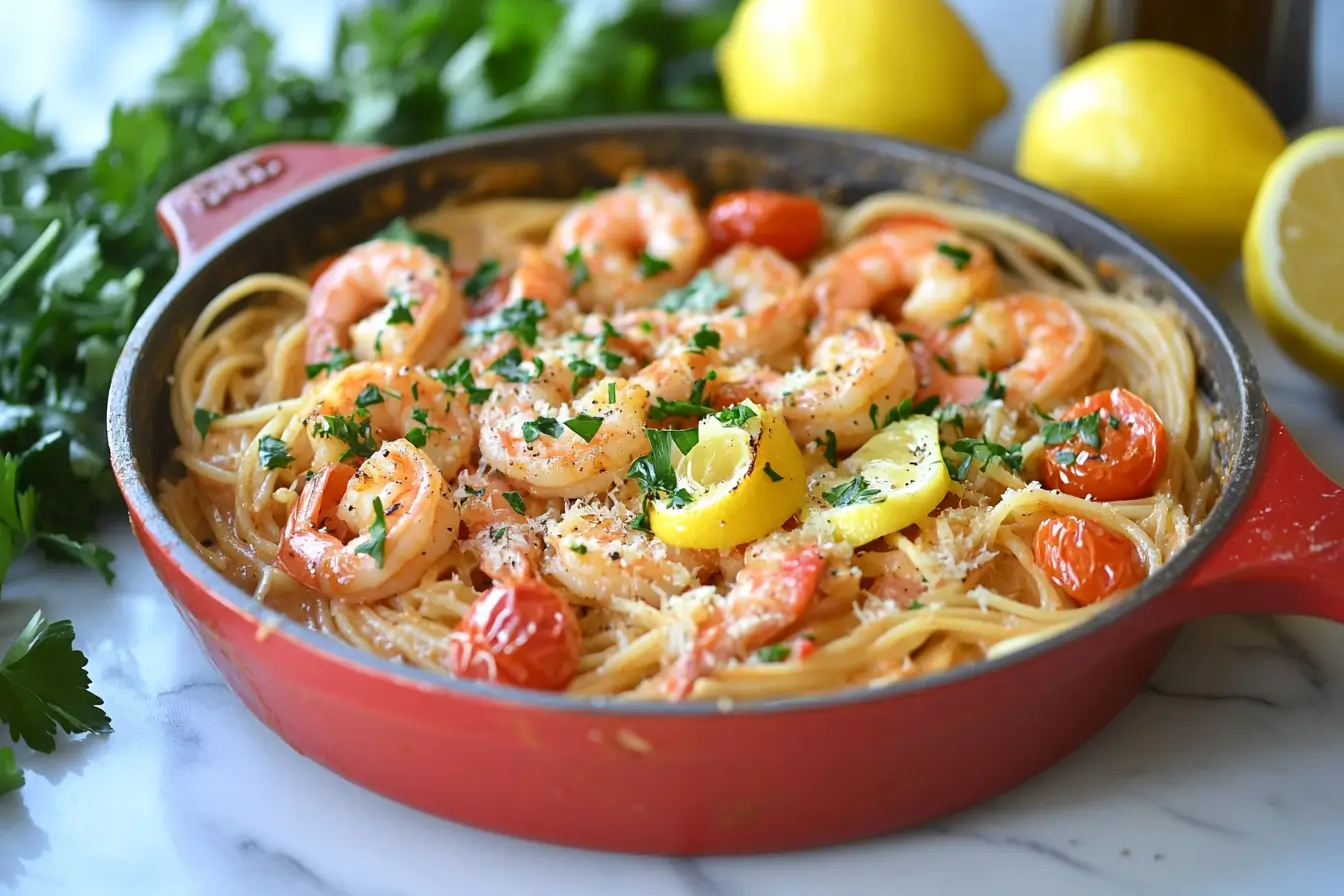Looking for a quick yet elegant salmon dinner that feels straight out of a fine-dining restaurant? This Pan-Seared Salmon with Creamy Florentine Sauce is the answer! Perfectly golden-crusted salmon fillets are nestled in a rich, garlicky Parmesan spinach sauce that’s both indulgent and easy to make.
Whether you’re cooking for a weeknight meal, a romantic date night, or a special occasion, this dish is guaranteed to impress. Best of all? It’s ready in under 30 minutes with simple ingredients you probably already have in your kitchen. If you love restaurant-quality salmon dishes but want to make them at home, this recipe is for you!
Why You’ll Love This Recipe
Restaurant-quality flavors at home – Enjoy a gourmet meal without the hefty price tag!
Quick & easy – This dish comes together in just 30 minutes.
Rich, creamy Florentine sauce – A luscious blend of garlic, Parmesan, and fresh spinach.
Perfect for any occasion – Whether it’s a casual dinner or a fancy feast, this salmon delivers.
Pairs beautifully – Serve it with pasta, rice, or roasted veggies for a complete meal.
Ready to elevate your dinner game? Let’s dive into this irresistible salmon recipe!
Ingredients You’ll Need
For the Salmon:
- 4 salmon fillets (about 6 ounces each)
- 2 tablespoons olive oil
- Salt and freshly ground black pepper, to taste
For the Creamy Florentine Sauce:
- 3 cloves garlic, minced
- 1 small onion, finely chopped
- 2 cups fresh spinach, chopped
- 1 cup heavy cream
- ¼ cup grated Parmesan cheese
- ½ cup chicken broth
- 1 teaspoon lemon zest
- 1 tablespoon lemon juice
Optional Garnishes:
- Fresh parsley or basil, chopped
Pro Tip: Wild-caught salmon provides the best flavor and texture, with a firmer bite and richer taste than farmed salmon.
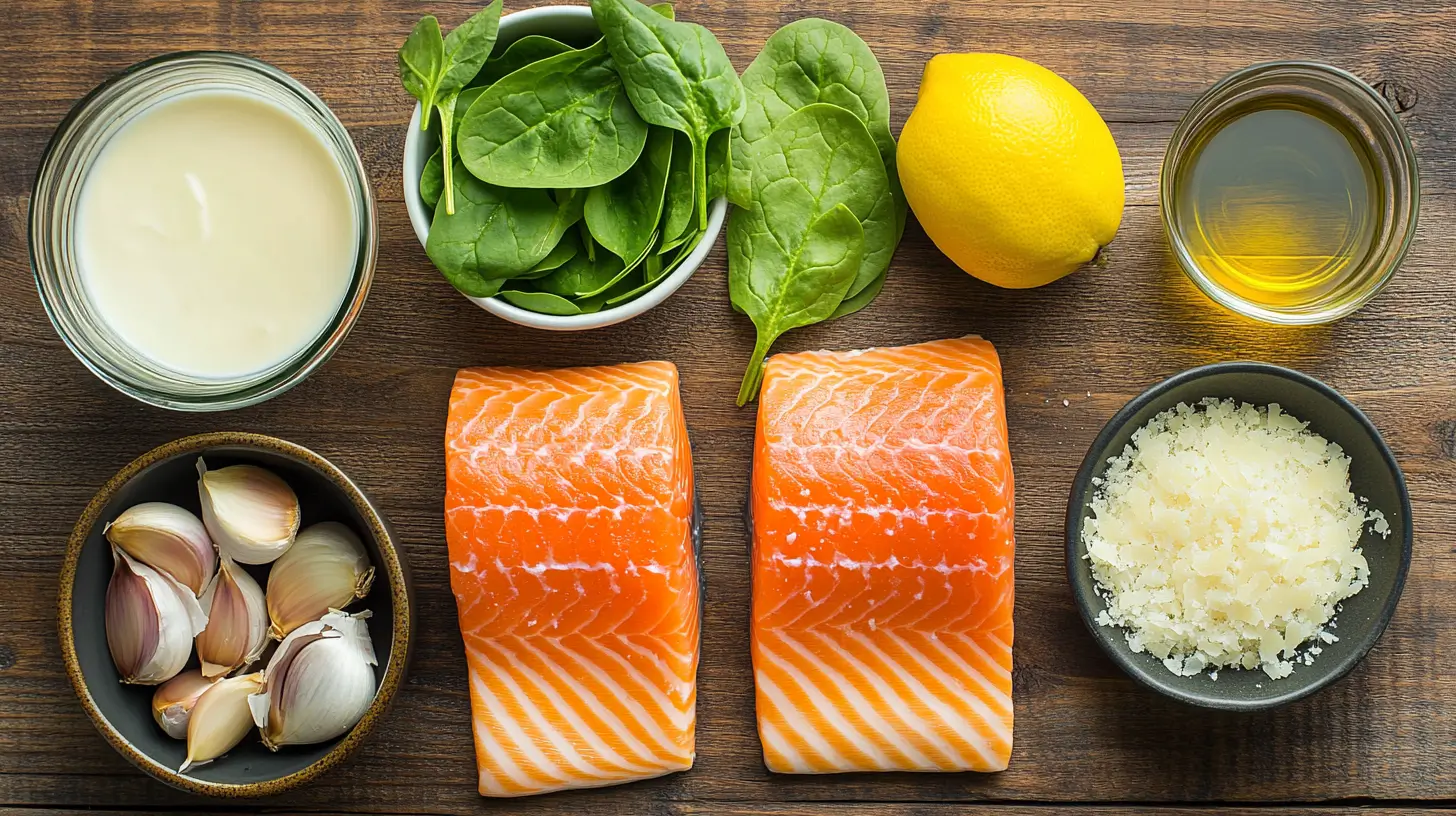
Step-by-Step Instructions
How to Cook Pan-Seared Salmon
- Prepare the salmon: Place the salmon fillets on a clean plate or cutting board. Use paper towels to pat them dry on all sides. Removing excess moisture is key to getting a golden-brown, crispy crust.
- Season the fillets: Sprinkle salt and freshly ground black pepper on both sides of the salmon. Make sure to season evenly to enhance the flavor.
- Preheat the pan: In a large skillet, heat 2 tablespoons of olive oil over medium-high heat. The oil should shimmer but not smoke—this ensures the salmon sears properly.
- Sear the salmon: Carefully place the salmon fillets skin-side down first (if the skin is intact). Let them cook undisturbed for about 4–5 minutes, or until the skin becomes crispy and easily releases from the pan. If the salmon doesn’t lift easily, let it cook a little longer.
- Flip and finish cooking: Use a spatula to gently flip each fillet. Cook for another 4–5 minutes on the other side, or until the salmon reaches your preferred doneness. The internal temperature should be 125°F (52°C) for medium-rare and 130–135°F (54–57°C) for medium. The flesh should be slightly opaque and flake easily with a fork.
- Remove and rest: Transfer the cooked salmon to a clean plate and set aside while you prepare the sauce. Resting the salmon for a couple of minutes allows the juices to redistribute, keeping it moist.
Pro Tip: Cooking skin-side down first creates a crispy texture while preventing the fillet from sticking to the pan. Avoid moving the salmon around while searing to develop a perfect crust.
How to Make the Creamy Florentine Sauce
- Reduce the heat to medium: Keep the same skillet to retain all the flavors left from the salmon. If there’s excess oil, remove a little, leaving about 1 tablespoon in the pan.
- Sauté the onion: Add the finely chopped onion and cook for 3–4 minutes, stirring frequently, until it becomes soft and translucent.
- Add the garlic: Stir in the minced garlic and cook for 1–2 minutes until fragrant. Be careful not to let it burn, as burnt garlic can make the sauce bitter.
- Wilt the spinach: Add the chopped fresh spinach to the pan. Stir frequently and let it cook until it softens and wilts, about 2–3 minutes.
- Deglaze and reduce: Pour in the chicken broth, scraping up any browned bits from the bottom of the pan. This step enhances the depth of flavor. Bring to a gentle simmer and allow it to reduce slightly for about 3 minutes.
- Incorporate the cream and cheese: Lower the heat and stir in the heavy cream, followed by the grated Parmesan cheese. Continue stirring until the cheese is fully melted and the sauce starts to thicken.
- Add citrus balance: Stir in the lemon zest and lemon juice to brighten the flavors and balance the richness of the cream.
- Simmer to perfection: Let the sauce cook for another 3–5 minutes, stirring occasionally, until it reaches a smooth, creamy consistency. If it gets too thick, add a splash of chicken broth to loosen it up.
- Adjust seasoning: Taste the sauce and add more salt and black pepper if needed.
How to Combine and Serve
- Return the salmon to the skillet: Nestle the seared salmon fillets back into the pan, spooning some of the creamy Florentine sauce over the top of each piece.
- Warm the salmon through: Let the salmon heat in the sauce for about 2 minutes on low heat. This allows it to soak up the flavors without overcooking.
- Garnish for freshness: Sprinkle chopped fresh parsley or basil over the top for a vibrant finish.
- Serve immediately: Plate the salmon with your preferred sides, such as creamy mashed potatoes, garlic butter asparagus, or lemon butter pasta. Spoon extra sauce over the fillets before serving.
This dish is best enjoyed fresh, but any leftovers can be stored and reheated using the proper methods to maintain flavor and texture.
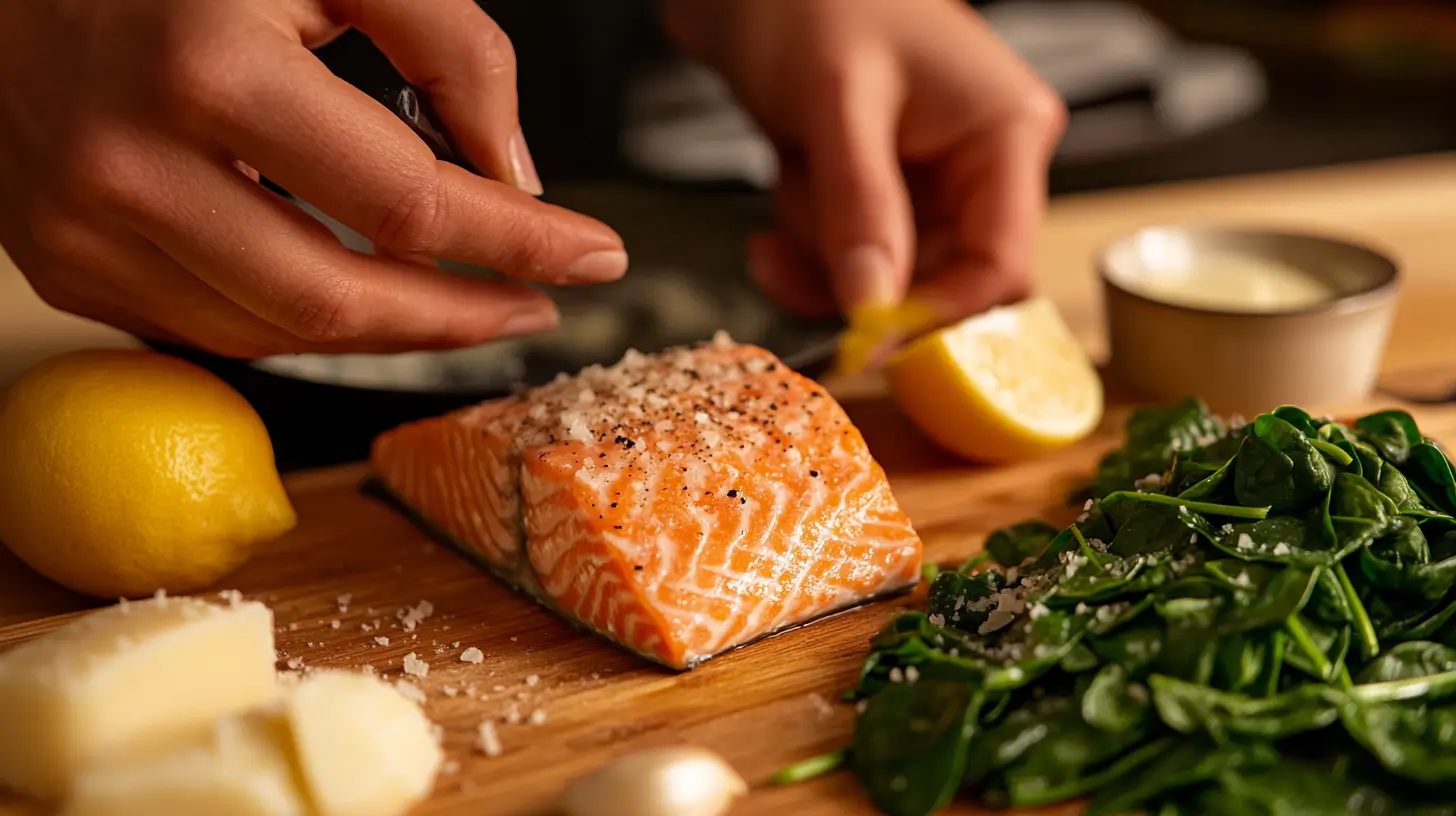
Pro Chef Tips for Perfect Pan-Seared Salmon
- Use room-temperature salmon for even cooking – Let the salmon sit at room temperature for about 15 minutes before cooking. Cold salmon straight from the fridge can cook unevenly and may not develop a perfect sear.
- Don’t overcrowd the pan – Give each fillet enough space in the pan. If the pieces are too close together, steam will build up, preventing a crisp crust from forming. Cook in batches if needed.
- Deglaze with Grape Juice or Apple Cider Vinegar for extra depth of flavor – After removing the salmon, add a splash of dry Grape Juice or Apple Cider Vinegar to the skillet, scraping up any browned bits. This enhances the sauce with a subtle acidity and complexity.
Variations & Customizations
- Dairy-Free Option – Replace the heavy cream with full-fat coconut milk for a creamy, dairy-free alternative. This adds a slight sweetness that pairs well with the savory flavors.
- Keto-Friendly Version – Serve the salmon with a side of creamy cauliflower mash or sautéed zucchini noodles instead of pasta or rice to keep it low in carbs.
- Extra Protein – Add shrimp or diced chicken to the sauce for a protein-rich variation. Sear the shrimp or chicken first, remove them, then follow the recipe as directed, adding them back in at the end.
What to Serve with Pan-Seared Salmon
This pan-seared salmon with creamy Florentine sauce pairs well with a variety of sides that complement its rich, buttery flavor. Here are some of the best options to complete your meal:
Creamy Mashed Potatoes
A side of smooth, buttery mashed potatoes is the perfect base to soak up the creamy Florentine sauce. For extra flavor, try adding roasted garlic or Parmesan cheese. The richness of the potatoes balances beautifully with the tender salmon.
Garlic Butter Asparagus
Crisp-tender asparagus sautéed in garlic butter adds a fresh and slightly earthy contrast to the creamy sauce. It’s a simple yet elegant side that enhances the dish’s flavors without overpowering them.
Lemon Butter Pasta
A light pasta tossed in lemon butter and herbs makes an excellent pairing with this salmon dish. The bright citrus notes from the pasta highlight the lemon zest and juice in the sauce, creating a well-balanced and cohesive flavor profile.
If you’re looking for more side dish ideas, roasted Brussels sprouts, sautéed green beans, or a fresh arugula salad with a lemon vinaigrette also make excellent choices.
Storage & Reheating Tips
To keep your salmon fresh and flavorful, follow these storage and reheating tips:
Storage:
- Allow the salmon and sauce to cool completely before storing.
- Transfer leftovers to an airtight container and refrigerate for up to 3 days.
- Avoid freezing, as the creamy sauce may separate when thawed.
Reheating:
- Stovetop: Warm the salmon and sauce in a skillet over low heat, stirring occasionally. If the sauce becomes too thick, stir in a bit of cream or broth to loosen it up.
- Microwave: Heat in short intervals at 50% power, stirring the sauce in between to prevent it from separating.
- Oven: Place the salmon in a baking dish, cover with foil, and warm at 300°F (150°C) for about 10 minutes.
Avoid overheating, as salmon can dry out quickly. Reheating on low heat ensures the texture and flavor remain as fresh as possible.
Frequently Asked Questions
How do I get a crispy crust on salmon?
To achieve a crispy crust, pat the salmon dry before seasoning and cook it skin-side down first in a hot skillet with oil. Avoid moving it around while searing, and use a high-smoke-point oil like avocado or olive oil.
Can I use frozen salmon for this recipe?
Sure, but be sure to fully thaw it before cooking. Place frozen salmon in the refrigerator overnight or use the quick-thaw method by submerging it in cold water for about 30 minutes. Cooking salmon while it’s still frozen may lead to uneven doneness.
What’s the best way to thicken the sauce?
If the sauce is too thin, let it simmer for a few extra minutes to reduce and thicken naturally. You can also whisk in a small amount of grated Parmesan cheese or a cornstarch slurry (1 teaspoon cornstarch mixed with 1 tablespoon water) for a thicker consistency.
Can I make this recipe ahead of time?
While salmon is best served fresh, you can prepare the sauce ahead of time and store it separately in the refrigerator for up to 3 days. When ready to serve, reheat the sauce on low heat and cook the salmon fresh for the best results.
Hobo Casserole with Ground Beef: A Hearty, Budget-Friendly Classic

